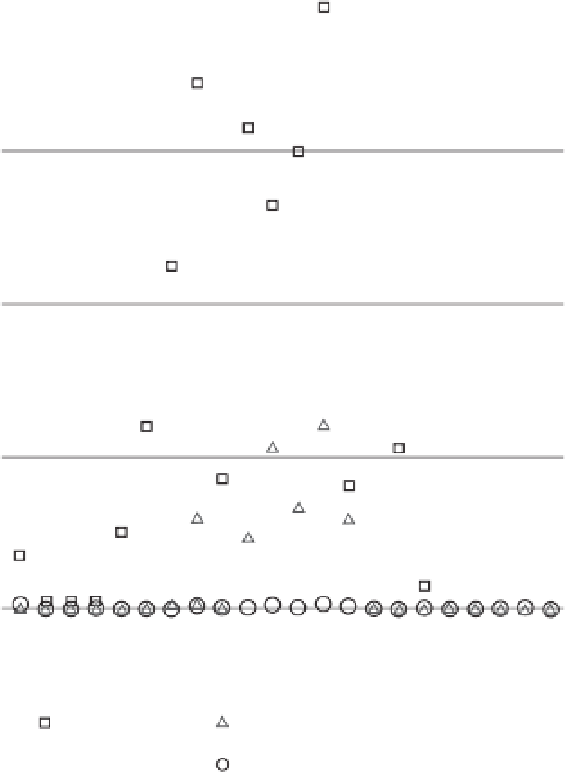Environmental Engineering Reference
In-Depth Information
8
8
6
6
4
4
2
2
0
0
11-Aug-01
10-Aug-01
dry seeding and catch crop (summer rye)
precipitation
hydroseeding
hydroseeding and straw mat
Figure 15.2
Comparative rates of surface runoff under different restoration treatments during a two-day rainfall event;
only the organic layer prevents from surface runoff and guarantees suffi cient protection from erosion. (Modifi ed from Krautzer
et al
. 2003 .)
functioning
. Consequently, the maintenance of biodi-
versity has become a special concern of agrarian and
environmental policy (European Commission (EC)
1992 ; Andersen
et al
. 2003 ; SCBD 2006 ). The increas-
ing awareness of the importance of biodiversity is
also refl ected in the development of material, proce-
dures and treatments used in restoration projects
and programmes in Arctic and alpine areas. In general,
the range of well-established restoration techniques
and knowledge for alpine areas exceeds those avail-
able for Arctic areas. However, one has to respect
that restoration in Arctic-alpine environments always
is subject to biophysical and climatic limits to plant
growth.
15.3.3
Key limiting factors
With increasing altitude and latitude, restoration fol-
lowing anthropogenic disturbances requires particular
focus on key limiting ecological factors of plant species.
Irrespective of the type of disturbances, only a combi-
nation of site-specifi c plant material together with
thoroughly chosen and applied restoration techniques
can lead to long-lasting restoration success. A major
requirement for all plant material used in restoration
programmes in Arctic-alpine environments is their
ability to reproduce under prevailing site conditions.
The altitudinal limit for commercially available site-
specifi c seeds for European alpine environments is








